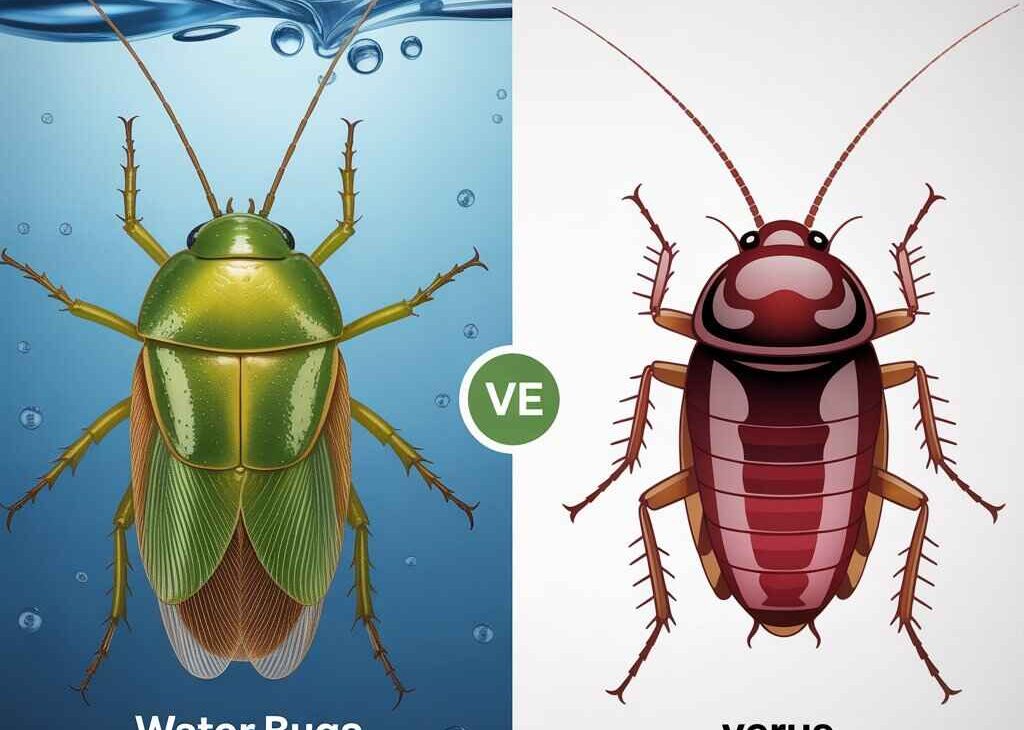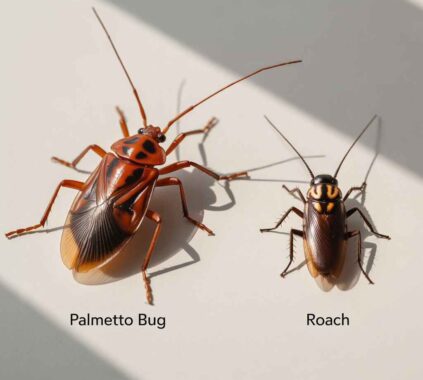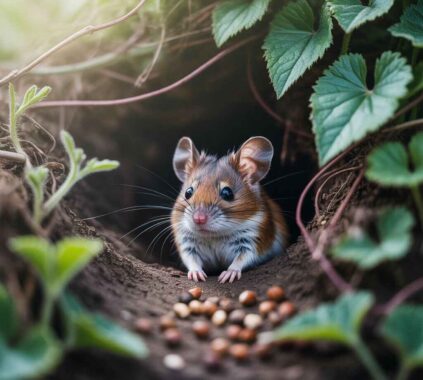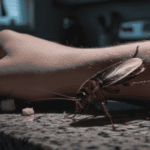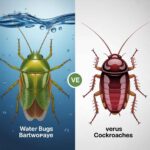Table of Contents
When a creepy crawler confronts you in your home, it’s good to know what you are looking at. On the surface, water bugs versus cockroaches could appear to be a non-issue since they share similar features such as dark brown ovals and extended antennae. But none of that could be further from the truth when it comes to their lifestyle, behavior and even how they find their way into your home.
In this post, we’ll take a deep dive into water bugs versus cockroaches: They’re differences, how to identify them, their behavior and most importantly the best ways to keep both from being unwelcomed residents in your living spaces. Now, pour a coffee and let’s start!
What Are Water Bugs?
Let’s begin with water bugs, also known as giant water bugs or toe-biters. True water bugs are members of the family Belostomatidae and order Hemiptera, which are an entirely separate class of insects from cockroaches. Water bugs are creatures that live in water and they love to inhabit freshwater bodies like ponds, lakes or marshes.
These critters are also notable for their size, as some species can get up to 2 inches long. Giant water bugs are a wide oval in shape and their forelegs specially adapted to grab prey, which gives them an appearance of pincers. Their hind legs are their “powerhouse”, which they use to push through the water as they swim.
But this is the kicker: For all their intimidating appearance, water bugs tend to be interested in avoiding humans. But they can give a painful bite when they feel threatened — thus the name“toe-biters.” Their bites may result in some swelling and redness, but otherwise they’re not a big deal.
Water Bugs versus Cockroaches: What Does a Water Bug Look Like
If you’ve ever wondered what the difference in appearance is when it comes to water bugs versus cockroaches, a picture of a water bug versus that of a cockroach can help you distinguish between them. Water bugs tend to be much bigger than cockroaches, with larger and more robust oval shaped bodies. Instead, cockroaches have a flatter body structure and a sleeker body (10-16 mm or 0.59”) that is smoother than the more irregular shape of water bugs.
What Are Cockroaches?
Now then: cockroaches the ultimate survivors in the insect world. You’ve likely encountered one scurrying along your kitchen floor, hanging out in dark corners of your bathroom. Water bugs are far less likely to infest your home than cockroaches. They are land insects and like to live in moist places: basements, kitchens, bathrooms.
Types of cockroaches There a few different types of cockroaches, but the common ones are: German Cockroach American Cockroach Oriental Cockroach These bugs can measure between 1 and 2 inches, and typically have a red or orange tint. Like water bugs, they also have long legs and antennae. But cockroaches are even better adapted to life around humans. They will eat just about anything, from crumbs and spoiled food to organic waste, which classifies them as scavengers.
Oriental Cockroaches: Commensal Cockroach Description Oriental cockroaches are a common species of cockroach.
Another common type of roach that may be mistaken for a water bug is the Oriental cockroach. This species has a shiny black or brown color and prefers damp locales such as basements, sewers, and kitchens. The oriental cockroach is a scavenger, unlike the water bug and does not forage very far looking for decaying organic matter instead.
Differences: Water Bugs versus Cockroaches
Now that you understand some of the fundamentals about these two bugs, let’s get into the nitty gritty to really answer your question about water bugs vs roaches. Two are more than just bigger and cuter.
Habitat
Water Bugs: Inhabit moist locations such as ponds, lakes or brooks. They are accomplished swimmers and they like lots of dense aquatic vegetation.
No matter where, cockroaches thrive in dark, damp places such as sewers, kitchens and bathrooms. They are land-dwelling insects, so they’re at home on solid ground.
Size and Appearance
Water Bugs: Bigger in size, sizes are known to reach 2 inches. They are more bull-like in their body, EMN reports and use a pair of pincers on the front legs to catch prey.
Cockroaches: Smaller than water bugs, usually an inch to 1.5 inches in length. They are flattened and oval-bodied, with spiny legs perfect for running.
Behavior
Water Bug: Predators that eat small fish and insects living in the water. With their sharp forelegs, they grip the prey and inject digestive juices.
Cockroaches: Scavenging on decayed food, trash and other dead organic matter. They are more likely to invade and infest homes and they carry bacteria.
Bite Risk
Water Bugs: Water bugs will bite under the right circumstances, but their bites are not dangerous to humans. The pain of a toe-biter bite is temporary and often leads only to minor swelling.
Cockroaches: Cockroaches won’t bite you, but they can carry dangerous bacteria and diseases like food poisoning, salmonella and asthma.
Do Water Bugs Fly?
You’ve probably heard that water bugs can fly. Waterbugs can fly, but do so infrequently and instead can be observed swimming or walking on top of water. Giant water bugs can fly short distances, especially at night when they are attracted by lights. But they don’t want to come into your house: The pest does like to keep near water, but it’s not going to enter your home the same way cockroaches and other bugs might do.
Do Water Bugs Bite?
Can water bugs bite?Yes, they can and water bug bites are known to be painful. Such bites are typically a defensive reaction when they feel threatened. A bite from a giant water bug is painful, causing local swelling and pain. But water bugs do not bite unless they are provoked, and are generally considered harmless to humans. By comparison, cockroaches are hardly ever aggressive and only bite people when it is absolutely necessary, like in the case of a severe infestation where there’s no food to be had.
How to Get Rid of Water Bugs
Maximize the surround natural habitat If you are faced with water bugs on your yard or inside the home, there are several ways to manage their population.
Remove Standing Water: Because water bugs love standing water, eliminate the extra water around your home. Repair drainage problems, clean out gutters and eliminate puddles of water.
Clear Debris: Get rid of anything that can serve as a water bug magnet, such as leaves, mulch and branches.
Apply Natural Repellents: Oils, such as peppermint oil or cedar oil are effective in preventing water bugs.
For cockroaches, you can try:
Clean your home: Get rid of food scraps, seal trash bags and clean up crumbs to make sure cockroaches aren’t attracted to your home.
Seal Openings: Fill crevices, windows gaps and baseboard openings where roaches could enter your home.
Deploy Cockroach Traps: Place some traps or put cockroach baits in place to get rid of cockroaches.
House Water Bug: What to Know
When we talk about a house water bug, it’s also especially important to realize that these bugs are more likely to be giant water bugs (or other types of water bug) which sometimes find their way inside of homes near bodies of water. There is much less concern about house water bugs than cockroaches unless they are actually biting.
Water Bug vs Palmetto Bug
You’ve probably heard of the palmetto bug, sometimes confused for a cockroach or water bug. The most common cockroach in Florida is Palmetto bug, in fact, that is just another name for the American Cockroach. Water bugs and palmetto bugs share some similarities but, the palmetto bug is actually a cockroach that’s most often found in hot areas such as Florida. Palmetto bugs, however, do not thrive in water or have an aquatic habitat and are much more likely to infest homes.
Black Water Bug: What Is It?
I believe water bug: The ones we have are pretty dark as well. Even if they look scary, black water bugs are type of giant water bug and share the same characteristics with other ones, that is to say that it lives in aquatic places and jumps at biting little bugs. They would not be a concern unless carried into the home.
FAQS
1. Are water bugs and cockroaches the same?
No, they’re different. Water bugs are aquatic, while cockroaches live on land.
2. Do water bugs bite?
Yes, they can bite if provoked, causing some pain and swelling.
3. Why do people call cockroaches water bugs?
Some cockroaches, like the American cockroach, are called “water bugs” because they like damp places.
4. Can water bugs infest my house?
Rarely. Water bugs prefer water environments, but they might wander indoors occasionally.
5. How do I tell a water bug from a cockroach?
Water bugs are bigger and more robust, while cockroaches are smaller and flatter.
Conclusion: Water Bugs Versus Cockroaches
There are certainly some similarities between water bugs and cockroaches but there’s almost no common ground between the two when it comes to their behavior, habitat, and threatening potential. Water bugs live in the water, with only occasional forays into homes, and cockroaches are scavengers that flourish in dark, moist hiding spots in houses. Either way, they can be a pain, though with the right information and pest control options you should be able to keep your home free of creatures.

